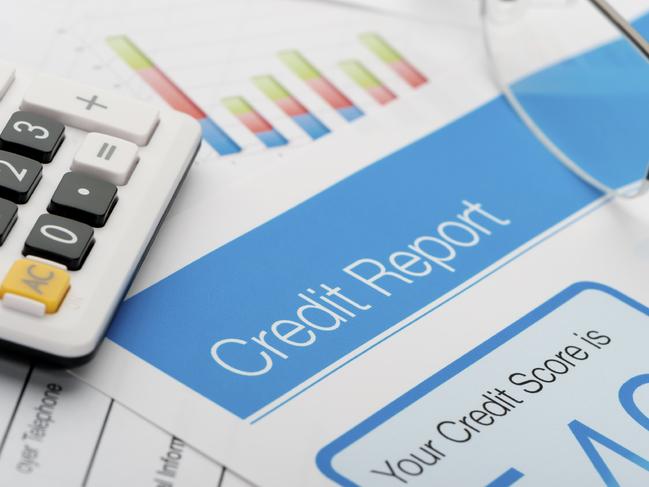Terry McCrann: Small to medium enterprise loans won’t appeal to businesses or banks
The federal government has expanded its loan guarantee scheme for SMEs but don’t expect a rush of applications, writes Terry McCrann.
Terry McCrann
Don't miss out on the headlines from Terry McCrann. Followed categories will be added to My News.
The federal government has expanded its loan guarantee scheme for SMEs intended to help them survive the anti-virus lockdowns which were either directly or indirectly destroying their businesses.
But Scheme 2.0 is likely to be just as unrushed as was the original scheme. It had offered up to $40 billion of loan support; so far SMEs have used just $1.5 billion.
Correction: have been able to use. Trust me, SMEs have not been rolling in it and so don’t — desperately — need the money. The poor utilisation tells us that lenders and borrowers have not been able to deal under the terms of Scheme 1.0.
But they equally won’t get there under Scheme 2.0 either.
The reason is both a replay of what made the initial scheme unworkable — the government would only guarantee up to 50 per cent of a loan, while insisting the loan had to be unsecured — and at the same time, a complete inversion of that.
Scheme 1.0 covered loans up to $250,000, but they had to be unsecured.
A bank lending, say, $200,000 to a SME would only get $100,000 back from the government if the business went broke.
Do you think there’s just a tiny, weeny, chance of businesses going broke at the moment? So a bank would basically have to be prepared to write the other $100,000 off from the get go as it could not get any security from the borrower.

Now the “smartest guys in the room” — in the ivory tower in Canberra — had an answer to this.
In words that could only have been written by a bureaucrat safe in his or her taxpayer – paid job, or a politician, or by both jointly, it was noted that the decision to lend would be made by the lender.
But “the government expects that lenders will look through the cycle to sensibly take into account the uncertainty of the current economic conditions when determining whether credit should be extended”.
Oh sure, just as we’ve ordered the destruction of jobs and businesses, we will now “encourage” banks to be prepared to lose upfront up to half their (shareholders’) money in lending to those businesses.
Apart from the fact that there is no “cycle” — an interesting term for a government-ordered destruction of businesses and the complete uncertainty of what happens with the virus — to “look through”, banks were “surprisingly” unwilling to write out multibillion-dollar blank cheques.
So what has the government done now with Scheme 2.0? It’s upped the maximum loan size to $1 million, extended the terms allowed from three to five years and, most importantly, will now allow the loans to be secured (but not against property). Gee, funny about that: first only a bureaucrat/politician would have thought banks would rush to make unsecured loans to businesses that had been, or were in the process of being, destroyed or seriously damaged.
Now, only the same bureaucrat/politician would think that businesses would rush to lose what other assets they had in trying to survive the government-ordered attack on their businesses.

So yes, the basic problem remains and indeed is upsized. Banks can still make unsecured loans but I doubt that now being able to lose $500,000 upfront is going to be any more appealing than losing $125,000 upfront.
Yes, they will be more willing to make that $1 million loan on a secured basis, now that they can. But now the business has to think long and hard on whether it wants to risk $500,000 of other assets.
That’s of course if they have any other assets. The vast majority of especially the “S” in SMEs only have the family home as their major asset.
That’s almost certainly already pledged but they couldn’t use it anyway under Scheme 2.0.
What assets any SME had coming into this would have significantly leached away over the past three months.
If it really were a “cycle”, banks and SMEs could try to look through it. But this is so utterly different.
First, we’ve had a government ordering your business to not operate. Then secondly, as Victoria shows, there’s the total unpredictability that it might order it again, and again, to not operate.
MASKS MADE SENSE IN MAY
This is the one utterly unambiguous sensible thing that any government has done in the battle against the virus: mandatory mask wearing.
As I argued more than two months ago in early May, universal — “and in potential crowd contexts, mandatory” — mask wearing had to be part of the mix as we came out of lockdowns.
Yet, as I added: “Have I heard a single political leader or one of their myriad of health experts even suggest that it would be a good idea for people to wear face masks? Far less making it mandatory as the counter to ending the lockdowns?”
The two great success stories in fighting the virus were Taiwan and Hong Kong, where mask wearing was universal.
Yet, again as I wrote in May: “Indeed, have I — or you — heard a single comment out of any of these people along the lines of “gee, HK and Taiwan have not just done better than us but stupendously better than us; is there something we can learn from them?”
HK is now experiencing a second wave like Victoria; but that does not detract from the clear lesson.
We also need to be “smart mask wearers”. Is the virus banned from banks? But can still strike down a lone walker on a beach? Amazing.
Originally published as Terry McCrann: Small to medium enterprise loans won’t appeal to businesses or banks
